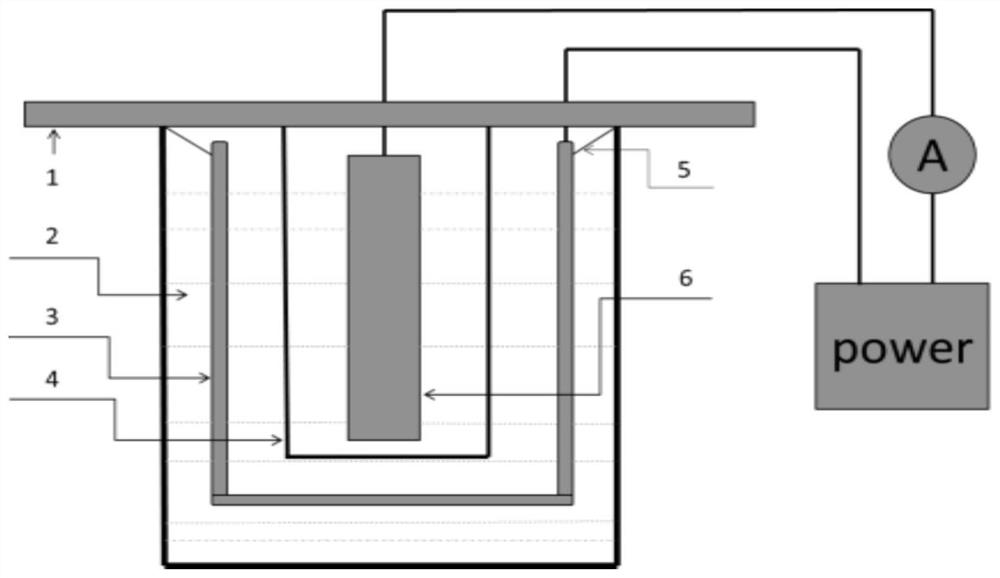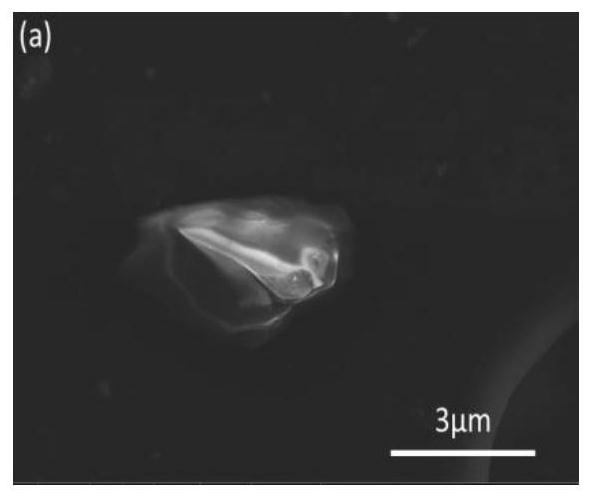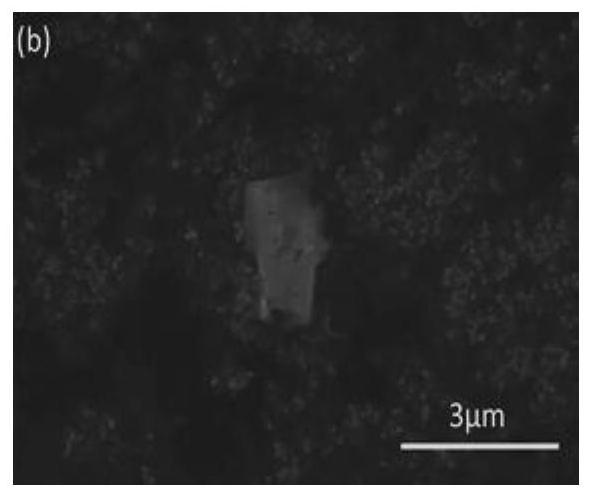Method for detecting non-metallic inclusions in steel
A technology for non-metallic inclusions and detection methods, which is used in measurement devices, preparation of test samples, and material analysis using measurement secondary emissions. The analysis results are unreliable and other problems, so as to reduce the manual workload and errors caused by manual labor, the detection speed is fast, and the manual workload is reduced.
- Summary
- Abstract
- Description
- Claims
- Application Information
AI Technical Summary
Problems solved by technology
Method used
Image
Examples
Embodiment 1
[0039] Example 1: The detection method of non-metallic inclusions in Benxi Steel is as follows.
[0040] (1) After the GCr15 bearing steel sample to be tested is solid-solution strengthened at 1000°C, it is made into a rod-shaped sample; the stainless steel sleeve is used as the cathode, the rod-shaped sample is used as the anode, and the cellulose acetate semi-permeable membrane is used to isolate it. / cm 2 Electrolytic extraction is performed under a constant current; the proportion of the electrolyte is: tetramethylammonium chloride 0.01g / ml, acetylacetone 0.1ml / ml, and the rest is 99wt% methanol solution.
[0041] (2) Dissolve the electrolyte solution after electrolysis in absolute ethanol, and filter it with a 1um polypropylene microporous membrane; the inclusions on the filter membrane are dissolved again in absolute ethanol solution, and pass through 500Gs, 1000GS, 1500GS , 2000GS, 2500GS, 3000GS and 3500GS magnetic separation, filter with 1um polypropylene microporous...
Embodiment 2
[0045]Example 2: The detection method of non-metallic inclusions in Benxi Steel is as follows.
[0046] (1) After the 60Si2Mn spring steel sample to be tested is solid-solution strengthened at 1000°C, it is made into a rod-shaped sample; the stainless steel sleeve is used as the cathode, the rod-shaped sample is used as the anode, and the cellulose acetate semi-permeable membrane is used to isolate it. / cm 2 Electrolytic extraction is performed under a constant current; the proportion of the electrolyte is: tetramethylammonium chloride 0.01g / ml, acetylacetone 0.1ml / ml, and the rest is 99wt% methanol solution.
[0047] (2) Dissolve the electrolyte solution after electrolysis in absolute ethanol, and filter it with a 1um polypropylene microporous membrane; the inclusions on the filter membrane are dissolved again in absolute ethanol solution, and pass through 500Gs, 1000GS, 1500GS , 2000GS, 2500GS, 3000GS and 3500GS magnetic separation, filter with 1um polypropylene microporous...
Embodiment 3
[0051] Example 3: The detection method of non-metallic inclusions in the steel is as follows.
[0052] (1) After the GCr15 bearing steel sample to be tested is solid-solution strengthened at 1100°C, it is made into a rod-shaped sample; the stainless steel sleeve is used as the cathode, the rod-shaped sample is used as the anode, and the cellulose acetate semi-permeable membrane is used to isolate it. / cm 2 Electrolytic extraction is performed under a constant current; the proportion of the electrolyte is: tetramethylammonium chloride 0.05g / ml, acetylacetone 0.25ml / ml, and the rest is 95wt% methanol solution.
[0053] (2) Dissolve the electrolyte solution after electrolysis in absolute ethanol, and filter it with a 1um polypropylene microporous membrane; the inclusions on the filter membrane are dissolved again in absolute ethanol solution, and pass through 500Gs, 1000GS, 1500GS , 2000GS, 2500GS, 3000GS and 3500GS magnetic separation, filter with 1um polypropylene microporous ...
PUM
 Login to View More
Login to View More Abstract
Description
Claims
Application Information
 Login to View More
Login to View More - R&D
- Intellectual Property
- Life Sciences
- Materials
- Tech Scout
- Unparalleled Data Quality
- Higher Quality Content
- 60% Fewer Hallucinations
Browse by: Latest US Patents, China's latest patents, Technical Efficacy Thesaurus, Application Domain, Technology Topic, Popular Technical Reports.
© 2025 PatSnap. All rights reserved.Legal|Privacy policy|Modern Slavery Act Transparency Statement|Sitemap|About US| Contact US: help@patsnap.com



